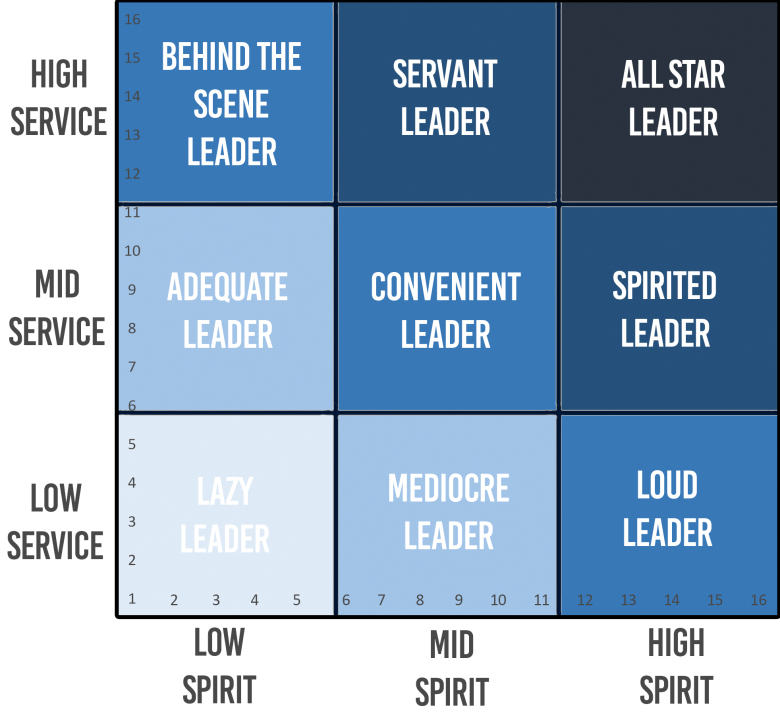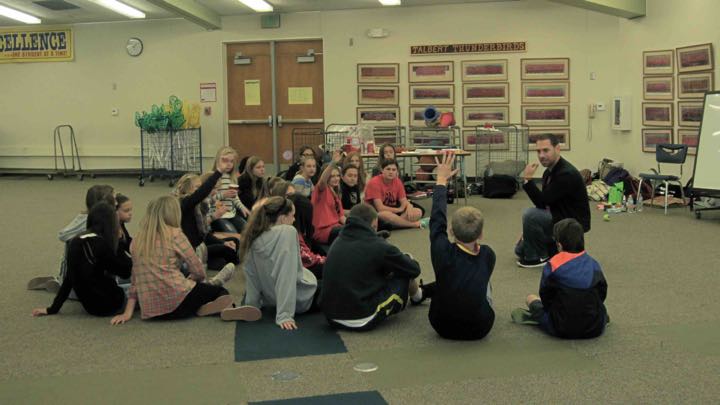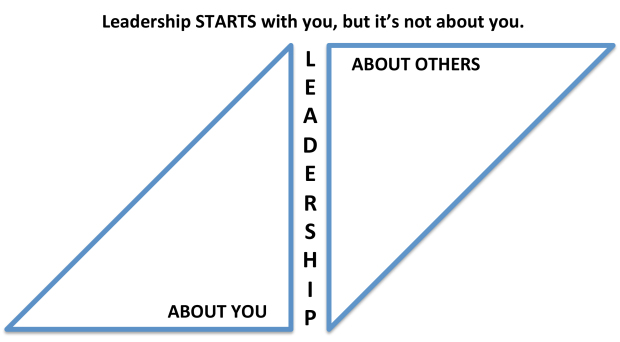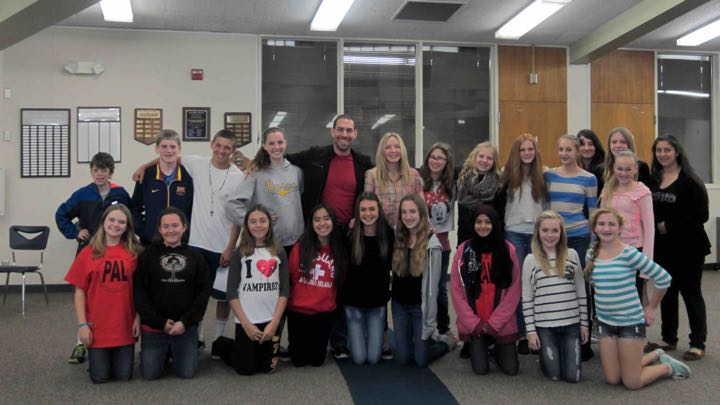How to Create Student Leaders
Are your student leaders on poster patrol, or are they actually being trained and directed to lead your campus culture?
I often visit schools where student leaders are more focused on making posters and producing theme days than actually meeting the social-emotional needs of their campus.
That’s why I like to help students define what the word leadership means. We all have different ideas of what that word means. We see it everywhere, and often question if the person calling themselves a leader is actually a leader 🙂
Break that word down for your students. Ask them to really consider what leadership means, and what a strong leader looks like.
How can we start that discussion? As an example, in the TEEN TRUTH: Leadership Summit program, we teach our students that a leader must A.C.T.
In my opinion, we can not call ourselves a leader if we are not willing to A.C.T. – an acronym for Acting with Compassion Today! We must work to understand what others are going through and we must do it with some urgency, because we don’t know what action a student might be thinking of taking.
If your students are willing to A.C.T. they will build an amazing school culture. I have seen it happen time and time again. Stephen Admudson, TEEN TRUTH’s Activities Director, believes it too. In fact, he created a free assessment that you can use to help your students understand what type of leadership skills they possess. He also provides an opportunity to learn more about the word leadership and how it applies to your students. Together we can create a culture of servant leaders who are willing to ACT with COMPASSION TODAY!

How to Discover & Cultivate Your Students’ Leadership Styles
By the time we reach adulthood, we have a pretty good understanding of our own leadership style. Even adults who are relatively new to leadership often have at least a general idea of the ways they can contribute.
However, it would be extremely unfair to immediately expect that same awareness from your student leaders because they’re still discovering themselves and creating the leader they want to be! It’s up to us to direct those students, but sometimes it can feel a little nebulous trying to navigate all of your student leaders while they’re still defining their leadership style.
Leadership Styles: What Kind of a Leader are Your Students?
To help solve that issue, we’ve created a simple Leadership Assessment PDF which you can use for both your student leaders AND yourselves.
This is an excellent exercise for you, your adult leaders, and your student leaders, because it helps to underline the natural strengths that each of us possess. When your students know themselves, they will be able to better recognize the ways that they can help others. It will also make your job easier, since you’ll be able to make a more informed decision when directing your students. Perhaps even more importantly, you will be able to recognize the places where OTHER leaders can fill in your own gaps.
We all have incredible value to add as leaders, and when we work in a group to maximize all of our strengths, we greatly increase our leadership potential. The first step to that is understanding how all of us fit in as leaders, which is why it’s so important to ask ourselves and our students…
“What kind of leader are you?”

Identifying the 9 Types of Leaders in Your School
School Culture is rooted in two key pillars of leadership: Service and Spirit. Student leaders need to have a strong work ethic and desire to help others (service) and an enthusiastic approach to life (spirited). Using the matrix below, student leaders are able to determine their LEADERSHIP TYPE.
Find out what type of leaders are in your program! Have each leader take this online assessment: Leadership Assessment
Remember that a student can develop their leadership skills, and that this assessment is meant to help guide your students to their next step in becoming a great leader.
Encourage your students to discuss the various leadership types and how they relate to building stronger relationships on campus.
ALL-STAR LEADER: This leader is ALL IN on service and spirited. They do both things equally well!
SERVANT LEADER: This leader is both service oriented and spirited, but tends to lean more towards service than spirit.
SPIRITED LEADER: This leader is both service oriented and spirited, but tends to lean more towards spirit than service.
BEHIND THE SCENE LEADER: This leader works their tail off behind the scene, but lacks the confidence to display much spirit. Don’t underestimate their value!
CONVENIENT LEADER: This leader has all the potential in the world, but they are stuck in the middle. There are times this leader is amazing, likewise there are times when this leader is completely neutral and ineffective.
LOUD LEADER: This leader is full of spirit. They are loud. They are crazy. They love to have fun. However, that is about the extent of their impact. They rarely do any work. They come across as lazy or uninterested. They talk, but don’t walk. More than anything else, these leaders need guidance and direction so that they can channel their energy in a productive way.
ADEQUATE LEADER: This leader is quiet and shy. They don’t mind serving when they are asked or told.
MEDIOCRE LEADER: This leader may be outgoing and comfortable being spirited. However, they might be more concerned about their status and the cool factor than they are about being ALL IN.
LAZY LEADER: This leader is lazy. They lack work ethic and enthusiasm. They are not fit to lead. They are completely checked out and nowhere to be found.

How to Shape Today’s Teens Into Tomorrow’s Leaders
When you work with youth, whether as a parent, teacher, coach or volunteer, you’re handed a unique opportunity. What you say and do helps shape them into the adult they will become. With that in mind, consider the following tools that can help pull out any child’s inner leader:
Student & Teen Leadership Attributes
What attributes contribute to leadership? If you asked ten different people, you would probably get ten different answers, yet it’s important to think through what qualities are inherent in effective leaders. Leadership can be boiled down to these four essential traits:
- In order to be a leader people naturally want to follow, you must have integrity.
- Teenage leaders must have the courage to not only make big plans, but to see them through.
- In the journey toward an achievement, one must remain vigilant, because altering circumstances will shape that path.
- Being an accessible, compassionate and open person ensures people know they can turn to you for guidance.
Encourage Empathy
Good teen leaders must be able to identify with those who look to them for direction. You can encourage empathy through methods such as these:
- When situations arise—whether in life, the news, or otherwise—having conversations about how other people might feel can help youth develop empathy.
- Understanding differences in others as positives helps further empathy.
- Saying “thank you” is a great start, but encourage kids to actually sit down and write a good, old-fashioned thank you note.
One-On-One Interactions
How you interact directly with adolescents can alter their leadership growth for the better. Here are some ideas from Inc.:
- Model the behavior that exemplifies good leadership, because young people will reflect your actions.
- Setting goals for kids through small projects gives them opportunities to succeed.
- Seek to understand where the adolescent is coming from, and this will encourage them to seek to understand others.
- Encourage kids to pursue their unique interests, as this will help them to become leaders shaping their own journey.
- By modeling self-improvement (e.g., learning a new hobby or earning a master’s degree), you can show them how to achieve their goals.
Today’s teens are the leaders of tomorrow. Make sure you make the most of your opportunity today to help them become good leaders tomorrow.

Creating New Teen Leaders Through Empathy
The beginning stages of leadership you will find that most student leaders have a hard time thinking about others before themselves. As ego-centric human beings it’s natural to think only about ourselves, our needs, our desires, our feelings, our time, our life, and our well being.
As leaders begin to mature and grow in leadership there is a shift that occurs. Effective leaders begin to understand that leadership is about people, and so they move the focus of their time and energy from “me” to “them.”
Essentially, leadership starts with me, but it’s not about me!
Leadership: About You vs. About Others
The process of moving from self-centered leadership to selfless leadership is a long road. Be patient with your students, and slowly guide them toward that true leadership mentality by asking them simple questions to encourage them to think of others.
A great place to start might be something as simple as, “How do you think this will effect your classmates?” or “Who do you think we could help the most right now?” will get them headed in that direction. Once they’ve got that mentality, coach them toward planning and action, but allow your leaders to do the “heavy lifting.”
You’ll be surprised at what can grow. Keep watering.

Student Leadership Programs
Are you thinking of how to improve your students’ leadership skills? TEEN TRUTH’s Student Leadership Summit is a great way to nurture and grow these skill sets, especially for high school students.
As a high school student, it’s never too early to learn more about leadership. Anyone and everyone can build their skills and take on what it means to be a leader. A student’s mind easily absorbs new skills and knowledge.
Student leadership programs seek to redefine what student leadership is all about and empower the ‘typical student.’ They aim to enhance school culture and mold the current crop of students into society’s best leaders.
What is student leadership?
Expressly defining student leadership can seem complicated. When we think of great men and women in leadership, we consider their decisions, the improvements they’ve made, how they lead their lives, and most importantly, their character. Such a lifestyle is at the center of any form of leadership, including student leadership.
What are the qualities of a good student leader?
There are many different qualities of a good student leader, here are a few that we think are the most important:
Good Communication
It is imperative that leaders must listen to the view and thoughts of others. To be able to do this, a good student leader must show genuine interest in others. Good leaders must be willing to receive others’ opinions and compromise to reach an agreeable consensus with everyone. After processing their concerns, leaders can address concerns clearly and respectfully.
Emphasis on Community
A leader usually helps guide a community and works to build it up. A good student leader will go out of their way for their classmates and will step up and defend their peers, even when other students in the class are standing by.
Willingness to Learn from Others
If there is one thing common among everyone in society, it’s that no one is perfect. For one to be a good student leader, one must first acknowledge this. Such a perspective will give students the humility needed to learn from peers in the class.

How to Use Small Groups to Develop Student Leadership and Independence
We thrive on connection, and that is why we need a tribe to raise us up. Not for just 1 or 2 years, but at least 15 or 16 until we could truly contribute to our community!
Most of you who read my blog work with middle school and high school students, who are just about ready to contribute. So how can we help to provide them a successful entrance into participating and leading our community?
If you’ve read Building School Culture From the Inside Out, you know that one of my long time mentors, Kathleen Bethke, taught me, “Never do for students, what they can do for themselves.” It is at this stage that we must start to loosen our hold on the reigns and allow them to take their first steps towards adulthood.
One of the best ways to do this is through peer-to-peer programming and small group work. This simple, effective tactic allows them to stretch their skills while remaining in a relatively structured environment.
We’ve seen so many students change their identity by becoming a coach in the RISING UP: Coaching Program. We’ve heard of schools that flip their culture by starting a Link Crew, WEB Crew, or PAL’s program. Your students are ready to start living in true, healthy relationship, you just need to inspire them to do the work.
School Counselor Resources For Leaders
For this reason, I asked TEEN TRUTH’s school counselor, Stephanie Lerner, to create a lesson plan for you to share with your entire staff. This custom-created, small group lesson focuses on the importance of coping skills and is something that I am hoping every teacher on your campus can use. It is ultimately something that can help drive relationships within your tribe!
Read Her Blog & Download Her Lesson Plan
If you like this plan, consider using the RISING UP: Coaching Program as well. We’ve seen countless schools take their entire student body to the next level of success with our peer-to-peer program without having to break their budgets. We are working to set up our district trainings for the summer, and are currently hosting various student trainings as well. Reach out to us, and we can help you find which route will be best for your school.
You are the leader of your tribe, but the only way to create the next leaders is to let them do the work themselves. So let’s not do for students what they can do for themselves!

President & CEO, TEEN TRUTH





